Samuel Fosso The Chief He What Element of Art Is the Emphasis in the Photo?
The multifaceted SAMUEL FOSSO
By Alexandra Gilliams
Samuel Fosso opened his first photography studio when he was only thirteen years old in Bangui, the capital of the Central African Commonwealth. At this point, he had already completed a 6 month apprenticeship where he learned how to apply a camera, as well as develop and impress photographs himself. He took pictures of clients during the 24-hour interval and began experimenting with actress motion picture he had leftover afterward closing time. Turning the room into a i man show, Fosso fabricated his studio a safe space where he would playfully create and explore different identities for himself.
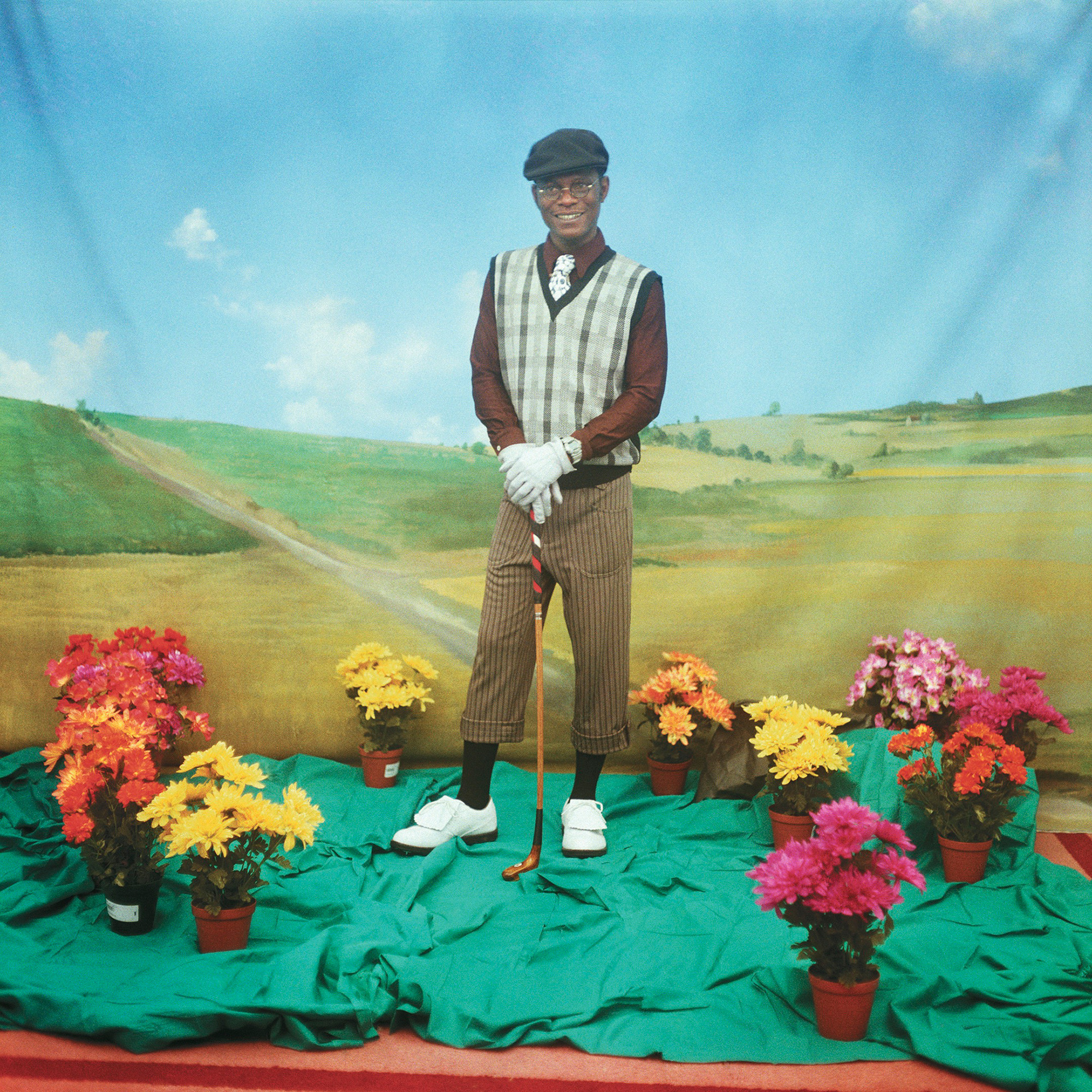
Samuel Fosso,Autoportrait Série « Tati »,Le Golfeur, 1997
© Samuel Fosso. Courtesy Jean-Marc Patras / Paris Fosso was born paralyzed in both his arms and legs, and his mother refused to have his photograph taken when he was a child. After some failed attempts with Western medicine, his paralysis was treated past his grandfather who was a healer and village leader in Nigeria. 1 year later on, a state of war of secession broke out and his family unit was on the move for 3 years, only to find their village burnt to the ground upon returning. Photography became a way to mentally heal from his troubled childhood and life growing up as a refugee, by feeling beautiful by dressing up and taking cocky portraits where could explore his identity by trying on new ones. "I wash my hands of it [my suffering]. What I desire is tomorrow and a better globe," Fosso explained during a retrospective of his work in New Dehli.
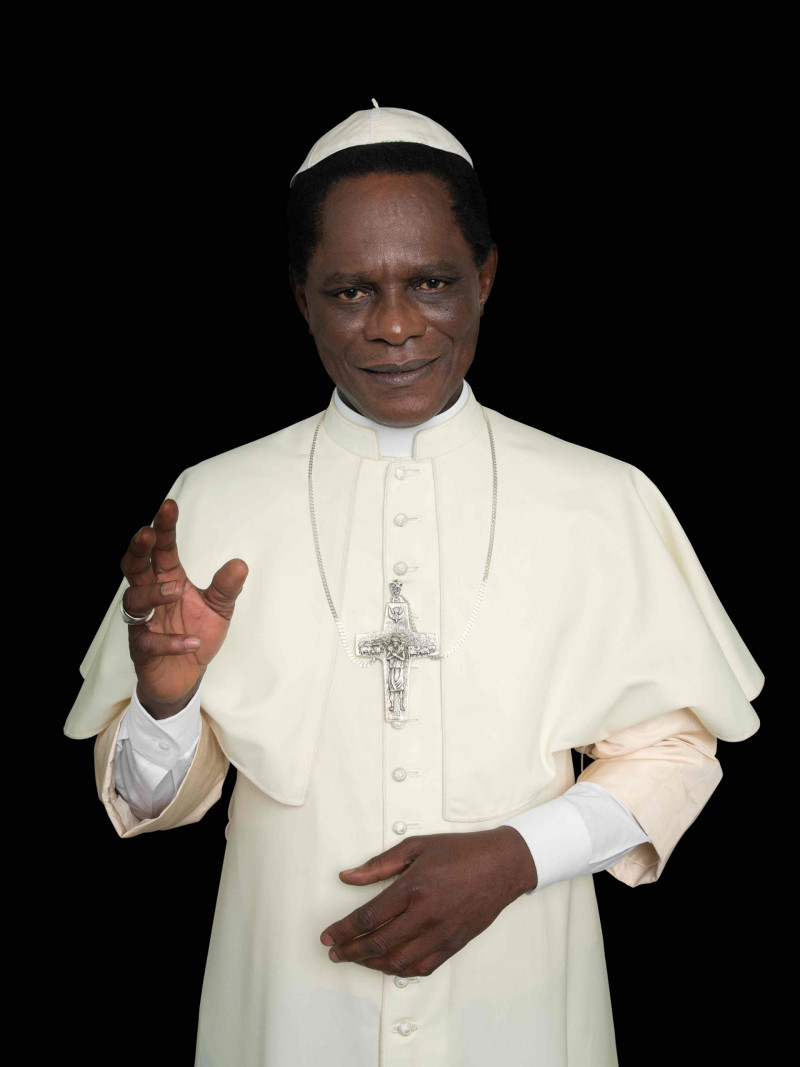
Samuel Fosso,Autoportrait Série « Blackness Pope », 2017
© Samuel Fosso. Courtesy Jean-Marc Patras / Paris Spending a lot of time in the 1970s leafing through American cultural magazines that were filled with images of stylish African Americans, he besides learned of the difficulties of segregation, which was significantly embedded in American politics and civilisation. The thought of this and the history of slavery in the Usa, with colonization he experienced in Africa, stirred something in Fosso. In a manner, he sympathized with African Americans by adopting their unique manner of wearing apparel. Inspired past artists such as James Dark-brown, he had a local tailor create perfectly fitted bellbottoms and his grandmother bought him platform boots and then he could resemble i of his idols, Prince Nico Mbarga, a Cameroonian-Nigerian musician who was admired for his elaborate, funky fashion.
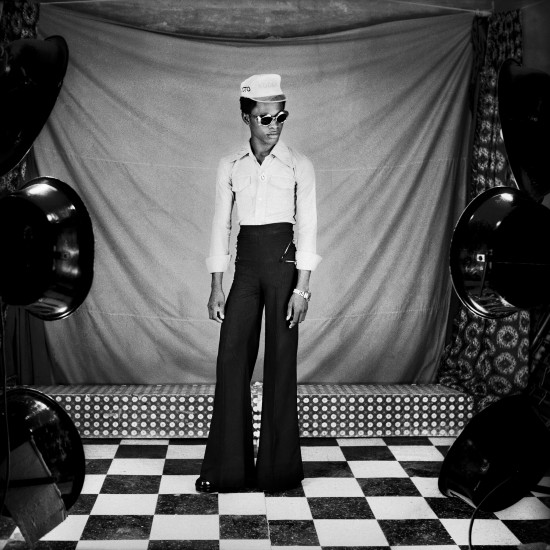
Samuel Fosso,Autoportrait Série « lxx's Lifestyle », 1975-78
© Samuel Fosso. Courtesy Jean-Marc Patras / Paris No thing the series, Fosso'southward photographs show him in powerful poses in which he says in that location is no ambiguity. I first saw Fosso's work in person during the Masculinity exhibition at Les Rencontres d'Arles, an important photography festival located in Arles, France, this past summer. Having his early on black and white cocky portraiture placed under a curatorial umbrella of masculinity was a strong choice. He was in the company of other artists such as Robert Mapplethorpe, whose images of body builders display their contained, unique identities and foray into a trope of masculinity. In the six portraits that were displayed, Fosso is a slim African teenager in his studio-turned-theater, expelling vulnerability while he documents himself coming of age, only also taking on the identity of those he admired and wanted to be. He one time said, "I am both character and manager. I don't put myself in the photographs: my piece of work is based on specific situations and people I am familiar with, things I desire, rework in my imagination and later, I interpret." His photographs were also an act of political rebellion confronting the self declared Emperor of the Primal African Republic, Jean-Bedel Bokassa, who had issued a ban confronting form-fitting garments.
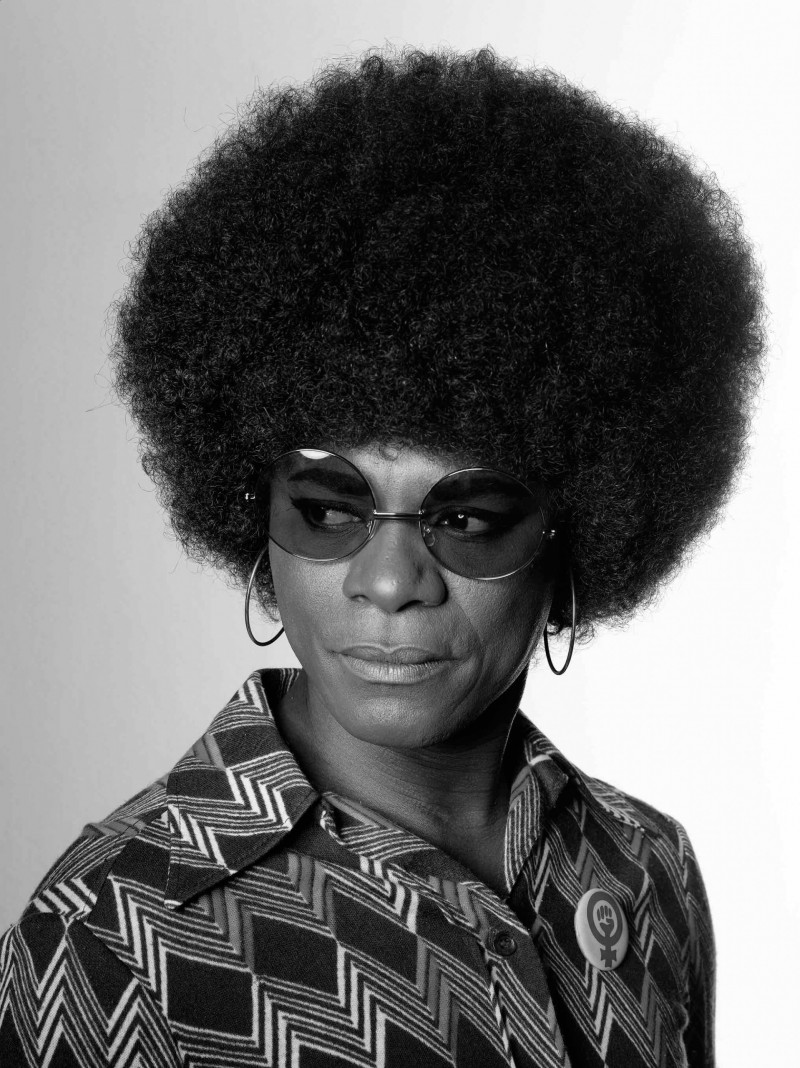
Samuel Fosso,Autoportrait Série « African Spirits », 2008
© Samuel Fosso - musée du quai Branly - Jacques Chirac Although Fosso did non consider himself an artist when he began taking his black and white cocky portraits, he continued to explore the possibilities and the ability of photography that goes beyond commercial portraiture. He was hired in 1997 by Tati, a Parisian department shop that is located in Barbès, a neighborhood dwelling house to many African people. Given a budget for set pattern and clothing, his self portraiture evolved through the introduction of colour, satire, and derisive disguises. He played with gender roles in Liberated American Woman/A Self Portrait and had successfully taking on the persona, with his eccentric pose, garb, and makeup, of a confident American woman. Moving even further in Le Chef (qui a vendu 50'Afrique aux colons), Fosso draped himself in jewellery, leopard print, and a smug disposition, and is seen belongings a bouquet of fake sunflowers in an a surreal portrait posing as an African chief and evoking their roles in the slave trade. He is wearing a hat similar to one that the Zairean dictator Mobutu Sese Seko would wear in seemingly every photograph that has been taken of him in public. Additionally, at that place are references to African colonial ethnographic images that were taken by Western photographers in this serial. At offset glance, his subjects appear quirky and colorful, and at that place is certainly humor involved, but the faces that he wears are not all in the same. All the same, no thing the subject he is playing in his photographs, Fosso himself exudes conviction and style.
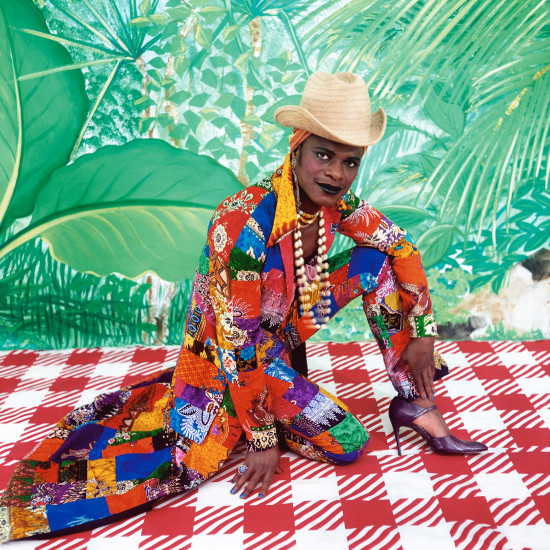
Samuel Fosso,Autoportrait Série « Tati »,La Femme américaine libérée des années seventy, 1997
© Samuel Fosso. Courtesy Jean-Marc Patras / Paris Following this pivotal series, he began taking iconographic photographs that placed him into a variety of roles. His series African Spirits, fabricated in 2008, displays him dressed as leaders who instead have helped to liberate Africans and those in the African diaspora. No matter how seemingly unattainable the persona could exist, Fosso has pretended to exist a blackness Pope to dressing upwardly as Mao in his Emperor of Africa 2013 equally a response to China's ongoing presence in the continent. It is clear that in any series that Fosso has undertaken, he has certainly merited his nickname: a human being of a thousand faces.
Source: https://www.xibtmagazine.com/2022/01/the-multifaceted-samuel-fosso/
Post a Comment for "Samuel Fosso The Chief He What Element of Art Is the Emphasis in the Photo?"